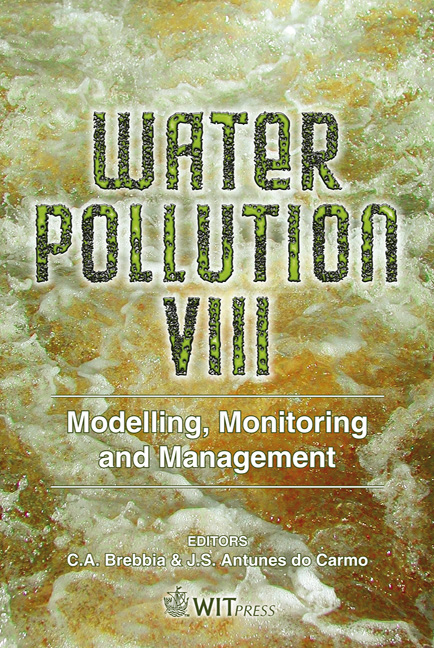Wastewater Discharge Impact On An Important River Of The Lerma-Chapala Watershed, Mexico
Price
Free (open access)
Transaction
Volume
95
Pages
11
Published
2006
Size
546 kb
Paper DOI
10.2495/WP060081
Copyright
WIT Press
Author(s)
C. Fall, A. P. Hinojosa, M. C. M. Jiménez & M. C. L Carreño
Abstract
The Lerma-Chapala watershed is one of the most important hydrological systems of Mexico. The Lerma, the main river of the catchment was subjected to receive increased volumes of untreated wastewaters. The research initiated consisted of producing an inventory and classifying the discharge sites, designing a strategic monitoring network and a computerized database, as well as evaluating the quality of the river water and wastewater received. The results showed 51 discharges throughout the high course of the river (the first 60 km). Discharge sites were localized with a GPS and included on a map and database. A monitoring network of 21 sampling stations was proposed, from which 15 stations were selected to evaluate the water quality of the river, together with other 13 priority discharge sources. The average concentrations measured at the 15 sampling stations of the Lerma, during the wet season, were < 0.5 mg/L O2 (at most of the sampling point), 149 mg/L COD and 492 mg/L of total solids, against 0.4 mg/L of O2, 388 mg/L COD and 2752 mg/L TTS in the dry season. The same septic conditions were observed in many of the discharges. Microtox based toxicity analyses showed that 7 of the 13 evaluated discharges, during the dry whether, compared with 2 during the wet season, were extremely toxic to the Microtox test organism (TU > 5). With respect to the river, 13 of the 15 samples were analyzed in the dry season against 1 of 15 in the wet season, showing very toxic characteristics. The results obtained evidenced the actual state of the river during the dry season, a significant wastewater collector, showing the urgency to implement a sanitation program in the basin and initiate remediation of the watercourse. Keywords: Lerma River, microtox, discharges, monitoring stations, physicochemical characteristics.
Keywords
Lerma River, microtox, discharges, monitoring stations, physicochemical characteristics.





